TAKING THE MICKEY (3)
By:
January 21, 2020
One in a series of 15 posts surfacing and dimensionalizing the unspoken norms and forms encoded in Walt Disney’s Mickey Mouse character. Research and analysis conducted by Josh Glenn in preparation for his appearance in the 2022 documentary The Story of a Mouse.
TAKING THE MICKEY: MINSTREL MICKEY | TRICKSTER MICKEY | A GOOD AMERICAN | HIGH-LOWBROW MICKEY | ICONIC MICKEY | NEOTONIC MICKEY | DONALD STEALS THE SHOW | MICKEY’S DORK AGE | FORTIES BACKLASH | DISNEY CO. MASCOT | FIFTIES BACKLASH | SIXTIES BACKLASH | “I’M THE MOUSE” | NOBROW MICKEY | TAKING THE MICKEY. Also see the series MOUSE: MOUSE (INTRO) | PRE-MICKEY MICE (1904–1913) | PRE-MICKEY MICE (1914–1923) | PRE-& POST-MICKEY MICE (1924–1933) | POST-MICKEY MICE (1934–1943) | POST-MICKEY MICE (1944–1953) | POST-MICKEY MICE (1954–1963) | POST-MICKEY MICE (1964–1973) | POST-MICKEY MICE (1974–1983) | POST-MICKEY MICE (1984–1993) | POST-MICKEY MICE (1994–2003).
Mickey wasn’t an immediate hit in the United States — he was briefly more popular in Europe — but soon enough, he was massively popular. By 1932, his popularity had eclipsed that of his predecessor and rival, Pat Sullivan and Otto Messmer’s Felix the Cat. In his brilliant essay “A Biological Homage to Mickey Mouse,” one of his 1970s-era columns in Natural History magazine, evolutionary biologist Stephen Jay Gould would claim that this may have had something to do with how angular Felix was compared with MM; more on Gould’s theory in a later installment of this series.
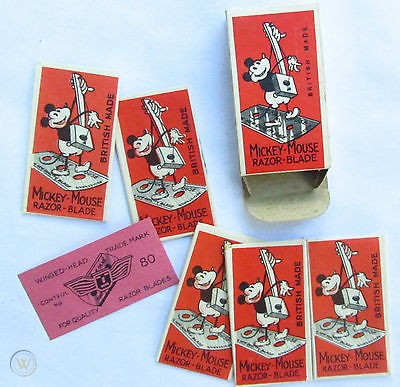
By linking the distribution of Mickey Mouse cartoons to sales of consumer goods bearing Mickey’s image, Walt and Roy Disney helped develop the motion of corporate synergy. There was a fortune to be made through sales of MM merch — particularly the popular MM wristwatch, but so much more. Clothing, food, school supplies, even razor blades!
By the end of 1931, some three quarters of a million children were enrolled in Mickey Mouse clubs. They attended MM performances at movie theaters, sang a theme song, and recited a creed: “I will be a square-shooter in my home, in school, on the playground, wherever I may be. I will be truthful and honorable and strive always to make myself a better and more useful little citizen.… in short, I will be a good American.”
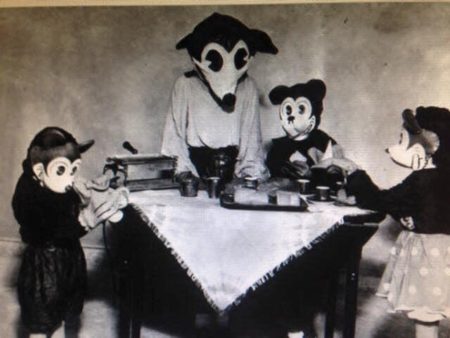
That’s right, Mickey — the libidinous, scandalous, impish trickster — had become a role model for children. Under Mickey’s aegis, American kids were encouraged to be useful, hard-working, and well-behaved. “Mickey… had become virtually a national symbol, and as such he was expected to behave properly at all times,” recounts Stephen Jay Gould. “If he occasionally stepped out of line, any number of letters would arrive at the Studio from citizens and organizations who felt that the nation’s moral well-being was in their hands. … Eventually he would be pressured into the role of straight man.”
Disney story artists began to write Mickey’s roles differently. Alva Johnston, in 1934, took note of the change, which Walt openly discussed with reporters: “Extreme vigilance is exercised to keep [Mickey Mouse] from becoming a smart Alec. Too much whimsy and fantasy are objectionable.”
In his 2006 biography of Walt Disney, Neal Gabler hails “Mickey’s intrepid optimism, his pluck, his naivete that often got him into trouble and his determination that usually got him out of it.” Right — this is the Boy Scout that Mickey became.
Garry Apgar’s Mickey Mouse: Emblem of the American Spirit — the title says it all — describes Mickey’s traits as follows: “boundless energy, optimism, playfulness, independence, spunk, ingenuity, and a certain innocence.”
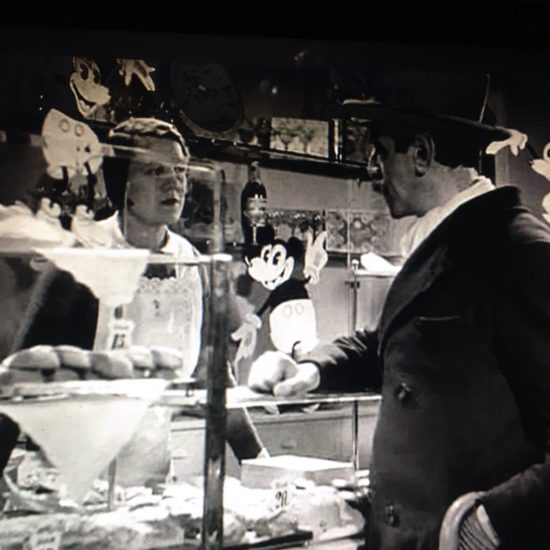
If Mickey was no longer objectionable to American parents, though, his popularity with kids worldwide made even the cleaned-up version of MM seem threatening… to Nazis. Mickey was popular in Germany — a cardboard Mickey effigy can be glimpsed in a pastry shop in Fritz Lang’s M (1931). Below: A Karl Arnold drawing for an illustration published in the January 26, 1931 issue of Simplicissimus, accompanied by the caption ‘Unerhört, dieses Biest stellt unser aller Prominenz in den Schatten!’ (‘Outrageous, this beast steals the limelight from all of our celebrities!’).
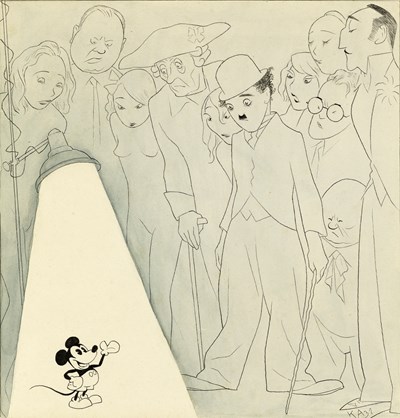
A 1931 piece in the Berlin daily Film-Kurier quotes “The Mickey Mouse Scandal,” an article or editorial published by a Nazi affiliate of the National Socialist Workers Party in northern Germany. Offended by the sight of Aryan youth sporting Mickey Mouse lapel pins, the fascist editorial writer blustered:
Blonde, freethinking, urban German youth tied to the apron strings of Jewish finance. Young people, were is your sense of self? Mickey Mouse is the shabbiest, most miserable ideal ever invented. Mickey Mouse is a recipe for mental enfeeblement sent over with capital from the Young Plan. Healthy instinct should tell every decent girl and honest boy that those filthy, dirt-caked vermin, the greatest carriers of bacteria in the animal kingdom, cannot be made into an ideal animal type. Have we nothing better to do than decorate our garments with filthy animals because Jewish business in America wants profits? Down with Jewish brainwashing of the people! Kick out the vermin! Down with Mickey Mouse, and up with the swastika!
To their credit, the Film-Kurier argues to the contrary: “Mickey Mouse, come on! We will brandish you as a cheerful emblem for all sensible people who oppose impiety, denial, and murder. Pin little Mickey to yourself as a distinguishing mark against the swastika and provocation.”
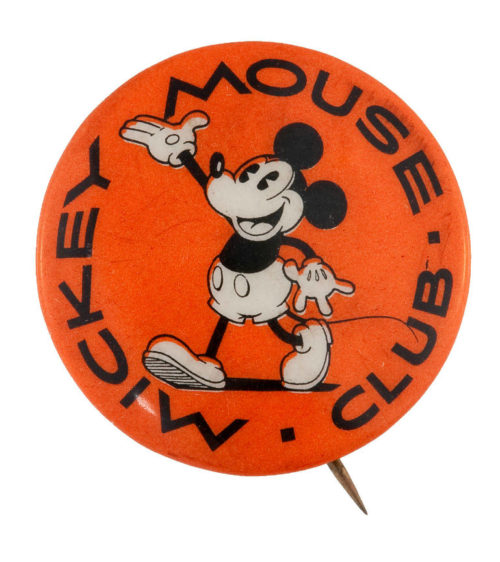
This anti-fascist movement didn’t pan out: Hitler was appointed Chancellor in 1933, and the Weimar Republic was soon transformed into a one-party dictatorship based on the totalitarian ideology of National Socialism. But it’s fun to think about: Mickey’s rubbery, round form offers such a striking contrast to the harsh, right angles of the swastika. Fascism is about strength, self-sacrifice, and other supposedly grownup virtues; Mickey — even the post-popularity “straight” version — instead represents childlike wit, whimsy, and free-wheeling individualism.
PS: Check out this 1936 Japanese propaganda cartoon in which Mickey invades on the back of a vampire bat…
MORE FURSHLUGGINER THEORIES BY JOSH GLENN: TAKING THE MICKEY (series) | KLAATU YOU (series intro) | We Are Iron Man! | And We Lived Beneath the Waves | Is It A Chamber Pot? | I’d Like to Force the World to Sing | The Argonaut Folly | The Perfect Flâneur | The Twentieth Day of January | The Dark Side of Scrabble | The YHWH Virus | Boston (Stalker) Rock | The Sweetest Hangover | The Vibe of Dr. Strange | CONVOY YOUR ENTHUSIASM (series intro) | Tyger! Tyger! | Star Wars Semiotics | The Original Stooge | Fake Authenticity | Camp, Kitsch & Cheese | Stallone vs. Eros | The UNCLE Hypothesis | Icon Game | Meet the Semionauts | The Abductive Method | Semionauts at Work | Origin of the Pogo | The Black Iron Prison | Blue Krishma! | Big Mal Lives! | Schmoozitsu | You Down with VCP? | Calvin Peeing Meme | Daniel Clowes: Against Groovy | The Zine Revolution (series) | Best Adventure Novels (series) | Debating in a Vacuum (notes on the Kirk-Spock-McCoy triad) | Pluperfect PDA (series) | Double Exposure (series) | Fitting Shoes (series) | Cthulhuwatch (series) | Shocking Blocking (series) | Quatschwatch (series)
MORE SEMIOSIS at HILOBROW: Towards a Cultural Codex | CODE-X series | DOUBLE EXPOSURE Series | CECI EST UNE PIPE series | Star Wars Semiotics | Icon Game | Meet the Semionauts | Show Me the Molecule | Science Fantasy | Inscribed Upon the Body | The Abductive Method | Enter the Samurai | Semionauts at Work | Roland Barthes | Gilles Deleuze | Félix Guattari | Jacques Lacan | Mikhail Bakhtin | Umberto Eco
